Power Automate (formerly Microsoft Flow) is one of the best automation tools if you are planning to find an IFTTT alternative for desktops. Here is how you can set up Power Automate on the web and desktop to get the most out of it.
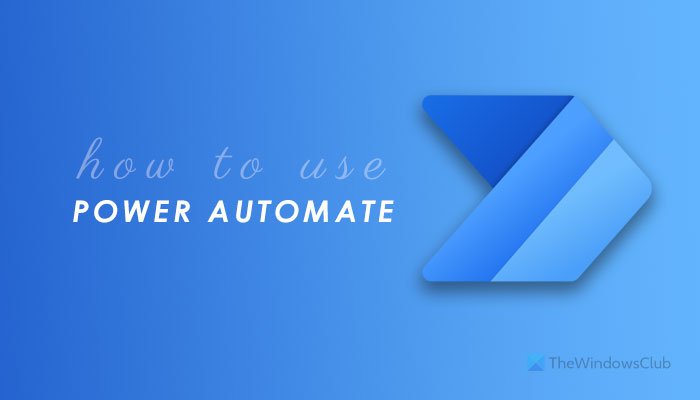
What is Power Automate
Power Automate is an automation tool built into Windows 11 and accessible on the web as well as Windows 10. When Zapier, IFTTT, Automate.io, etc., work with online apps, Power Automate works with online and offline apps. In other words, you can perform various tasks that have no relation to the internet, such as creating a folder, renaming a file, copying content to another location, etc.
While accessing Power Automate, you would come across a term called flow, which denotes the type of template of your task. For instance, there are five different flows included in Power Automate, and they are Automated cloud flow, Instant cloud flow, Scheduled cloud flow, Desktop flow, and Business process flow.
How does Power Automate work
There are mainly two parts to create a task in automation: trigger and action. Trigger lets you choose when to perform a task, and Action helps you decide what to do. All the tasks you will create or are already created come with these two things in the background. Once you are done with the task setup, Power Automate runs the task automatically in the background until or unless you stop it manually.
In other words, it has the same workflow as IFTTT, Zapier, and Automate.io. All of them allow users to choose a trigger and an action accordingly. However, Power Automate has a handy option called On error. It lets you choose a different action when an error occurs in the trigger or action. All the other tools do not have this option for the users.
Available apps and services for Power Automate
Power Automate has a wide range of compatible apps and services, allowing users to do more with an automation tool. Whether it is the web or desktop version, you could get the same set of options across both platforms. Talking about the specific apps, you can find Outlook, Excel, Word, etc. On the other hand, it offers different tasks based on variables, conditions, files, etc.
The best thing about Power Automate is that you can create a nested task. Let’s say you want to create a file in a certain location when you receive an email attachment, which is more than 10MB. If you cannot get it done in one task, you can create one task to fetch the attachment and another to create the folder.
If you are looking forward to an app with web and desktop support, Power Automate can be a good solution for you. Considering that, you can try using this service once to check if it fulfills all your demands or not.
How to use Microsoft Power Automate on the web
To use Microsoft Power Automate on the web, follow these steps:
- Visit the flow.microsoft.com website and sign in to your account.
- Click the Create button on the left side.
- Click on the Automated cloud flow option.
- Enter a name for the flow or task and select a trigger.
- Click on the Create button.
- Click the New step button.
- Choose an app for the action.
- Select an action.
- Click the Save button.
To learn more about these steps, continue reading.
At first, you have to visit the official website of Power Automate, which is flow.microsoft.com and sign in to your account. After that, click the Create button visible on the left side and select the Automated cloud flow option.
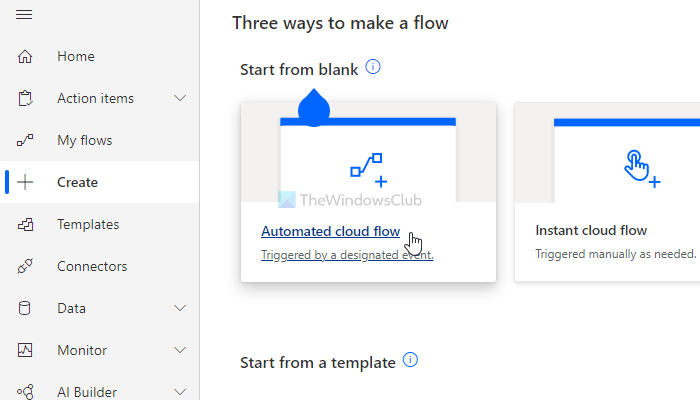
Here you can select other options according to your requirements:
- Instant cloud flow: You can set up a task, but you have to run it manually.
- Scheduled cloud flow: You can schedule a task at a predefined time.
- Desktop flow: It is mainly for desktop users.
- Business process flow: It is for those who like to create a nested task.
The first thing you have to do is to name your task. Then, select a trigger according to your wish, and click the Create button.
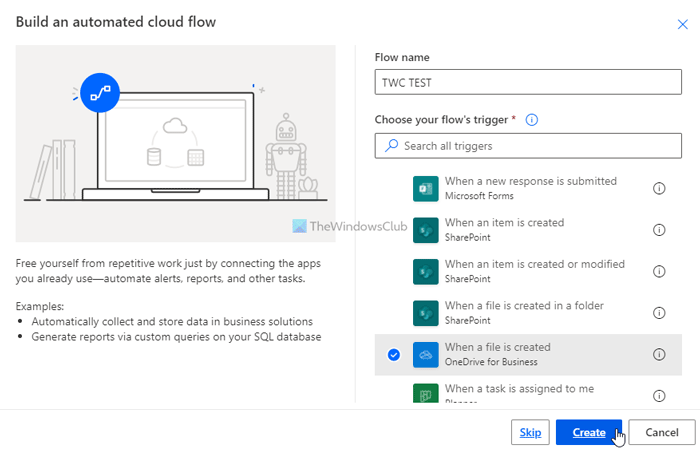
Depending upon your trigger, you may have to sign in to the app or service. Following that, click the New step button.
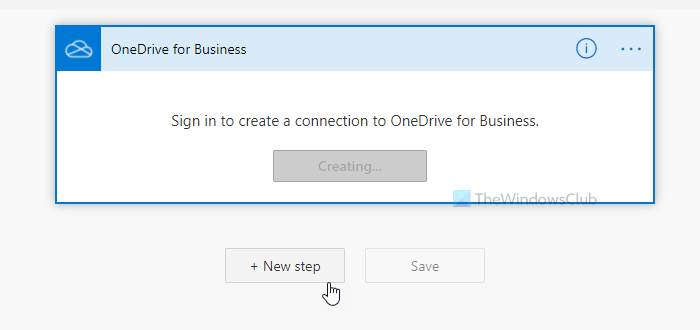
Here you have to select an action for your trigger. For that, click on a task you want to perform in the given list.
As per your selection, you might have to sign in to the selected service again. Once done, you can click the Save button.
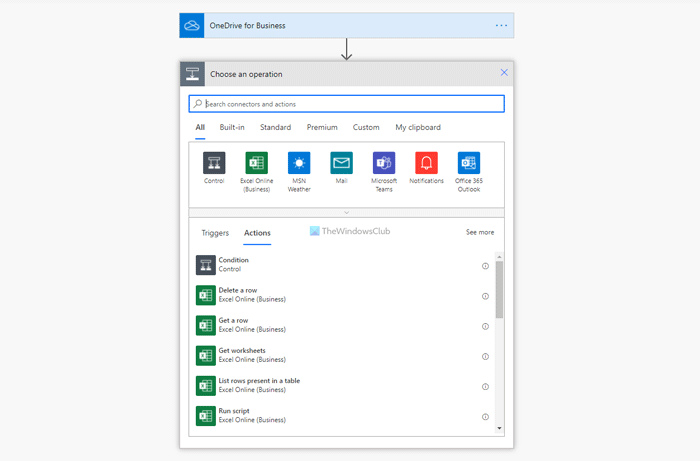
Now, you can run the task or flow in your account.
Before getting started, you should know that Power Automate Desktop works differently from the web version. In the desktop version, you have to create a nested task since there is no option to choose a trigger. In other words, you have to select one action as the primary action and the rest of them as the sub-action. The primary action works as a trigger, and the rest of them work as actions.
How to use Microsoft Power Automate in Windows 11/10
To use Power Automate in Windows 11, follow these steps:
- Search for the Power Automate app in the Taskbar search box and open it.
- Click the New flow button.
- Enter a name for your task and click the Create button.
- Choose an action from the left side.
- Fill up the given form as per your selected app.
- Click the Subflow arrow and select the New subflow option.
- Enter a name and click the Save button.
- Choose another action from the left side.
- Click the Save button.
- Click on the Play button to run the task.
Let’s check out these steps in detail.
At first, search for the Power Automate app in the Taskbar search box and open it from the search result. After opening, click on the New flow button.
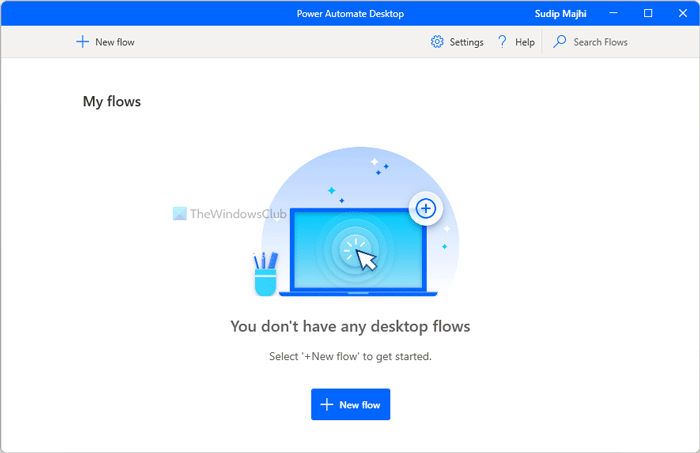
Now you have to enter the name of your task and click the Create button. Once you do that, you can find another window on your screen with the task name in the title. Then, select the primary action from the left side.
You can either double-click on an action or use the drag-&-drop method to select it. Depending upon your selection, you have to fill-up the form on your screen and click the Save button.
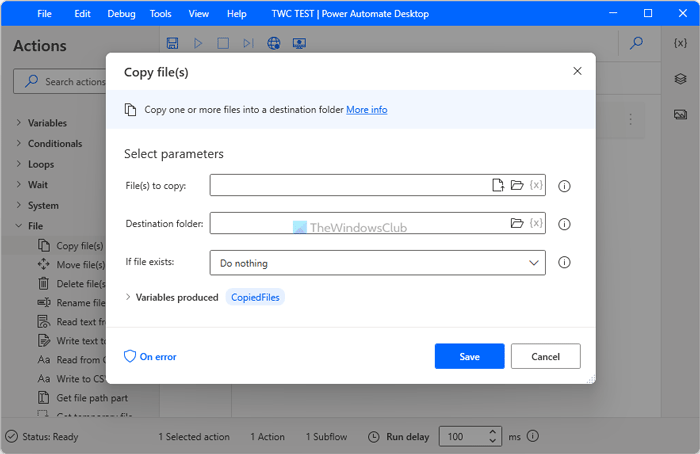
Next, click the Subflows arrow and choose the New subflow option. You can enter the name of your subflow as well.
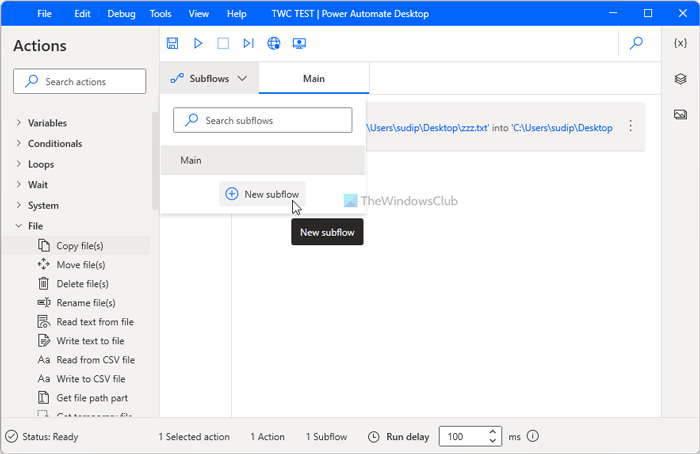
Then, you can select another action from the left side and click the Save button.
To explain the entire process, the first action will work as a trigger, and the Subflow will work as an action.
At last, you can click the Run button to test it.
Related: How to use Microsoft Power Automate Desktop to create a UI workflow.
Is Power Automate for desktop free?
Yes, Power Automate for desktop is free for Windows 11 and 10 users. If you cannot find it on your computer, you can download it from flow.microsoft.com. You have to use your Microsoft account followed by the installation.
Is Power Automate free with Microsoft/Office 365?
Yes, Power Automate is included with Microsoft 365 subscription. If you have an active Microsoft 365 subscription, you can use Power Automate on the web for free or without additional charges.
How much does Power Automate cost?
Power Automate for web costs around $15/month/user. However, if you have Microsoft 365, you can use it for free. Also, Power Automate Desktop is available for free for Windows 11 and Windows 10 users.
Considering everything, Power Automate seems to be a handy automation tool made to make you more productive. Hope this tutorial helps you get started with this tool.
Read: Zapier is a free Automation tool and a IFTTT & Microsoft Flow alternative.
Leave a Reply